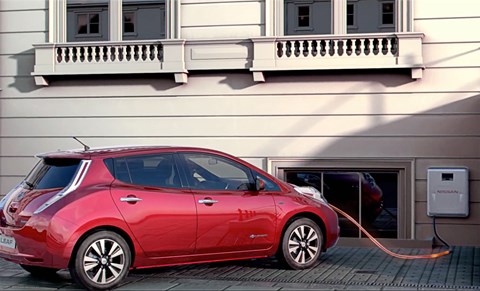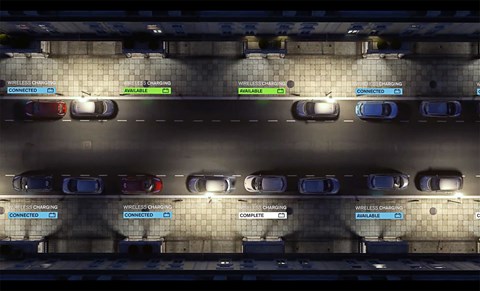► We take a look at the future of filling up
► Forget refilling – your car will do it itself
► It’ll trundle off in the night while you sleep
Imagine never having to visit a fuel station in the future. Not just because we’ll all be driving electric cars and traditional petrol stations will have been reclaimed as parkland for fluffy rabbits, but because your autonomous car will nip off to politely queue at the wireless charging pad at night, topping itself up for your journey to work in the morning.
Follow this concept through and you’ll only ever need to physically plug in your EV when you want to charge your house, supplying it with renewable energy generated at times of peak efficiency and stored in the car. Or perhaps when you want to sell the car’s excess juice back to the grid.
Sounds far fetched? Nissan is already working on it, and the requisite technologies are in the nascent stage of commercialisation. Together with architects Foster and Partners, the world’s biggest volume EV manufacturer has spent the last 12 months trying to figure out what the fuel station of the future might look like. The findings? That they won’t exist, and that their spiritual successor might be the electric car itself. ‘I think we both started out with the idea that this [fuel station of the future] might be an electrified version of an existing petrol station,’ says Foster and Partners’ head of design, David Nelson. ‘But as we got into the discussion, we realised there’s a bigger picture.’
That bigger picture traverses the tricky ground of self-charging autonomous electric cars – both technologies that are already in the pipeline. A BMW 7-series can already park itself in a garage, and BMW is working with Daimler to standardise induction charging – while also tackling the peaks and troughs of renewable energies’ patterns of supply and demand.
As Nelson points out, ‘The big problem with renewable energy is: how do you store it? You’ve got to put it into a grid, and the grid may just let it dissipate because the demand isn’t there that day.’ Equally, solar panels aren’t much use after dark, and nor are wind turbines if you can’t leave them running. So why not pump that electricity directly into an electric car while it is available, and then drive it home to be redistributed when those renewable sources are offline. Recycled EV batteries could be used as static storage cells; Tesla’s Powerwall offers home energy storage, admittedly from solar cells.
So Nissan, and other car makers, are rapidly pursuing all these concepts. Director of Nissan’s electric vehicle business unit, Gareth Dunsmore, believes electricity will soon become another ‘sharable economy’ and refers the cynic to the ‘vehicle-to-grid’ trials currently taking place in Denmark. ‘For me,’ he says, ‘both vehicle-to-grid and second-life batteries will be commercialised in 2016. So this is now. In five years’ time it will be commonplace.’ He admits that the legislative challenges are ‘huge’, but points out, ‘We’ve spent the last five years pioneering electric vehicles and really trying to drive legislation to allow for the adoption of electric vehicles, so we’ve built up all the right contacts.’ Besides, ‘Governments have to change – or they will fail on their [environmental] commitments.’
When it comes to cost, Dunsmore also points out that it’s ‘an awful lot cheaper to put in a charger than a petrol station’.Nelson adds that upgrading to wireless and then autonomous
systems is ‘just a question of evolution and time’, especially since this solves the space-limited infrastructure legacies of existing cities by allowing vehicles to share a single charging point automatically. ‘You’ve got to start somewhere. And a starting point where there is a level of distribution in urban streets would be very, very good.’
1) Renewable energy
For future mobility to be genuinely green its energy has to be entirely clean – which means renewable sources. Trouble is, solar panels only work in daylight and wind turbines are sometimes switched off to regulate supply. To maximise efficiency, this energy needs to be stored while it’s available.

2) Vehicle-to-grid
Nissan reckons the perfect vehicle for this storage is the electric car. Top up its batteries at a renewable supply, then plug it in at home, not to recharge but to power the house. Older batteries can even be recycled as scalable, affordable static storage for solar arrays at home.

3) Wireless charging
Already well into development at many OEMs, wireless charging does away with plugs and leads and uses inductive technology instead – instant convenience. Imagine charging pads in the road at every traffic light, topping you up while you wait for green.

4) Autonomous movement
Without the need to plug in a lead, autonomous cars could charge themselves, allowing several to share a single wireless charger without squabbling. Great for existing urban areas where a charging point per car is physically impossible.
Read more from the May 2016 issue of CAR magazine